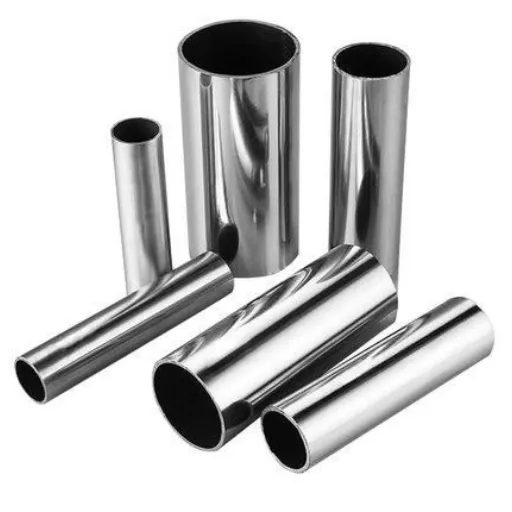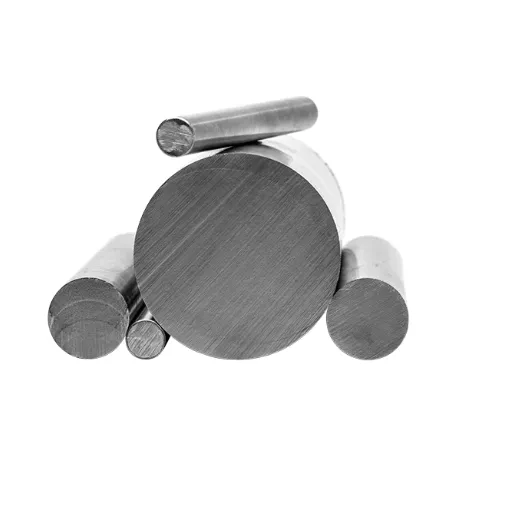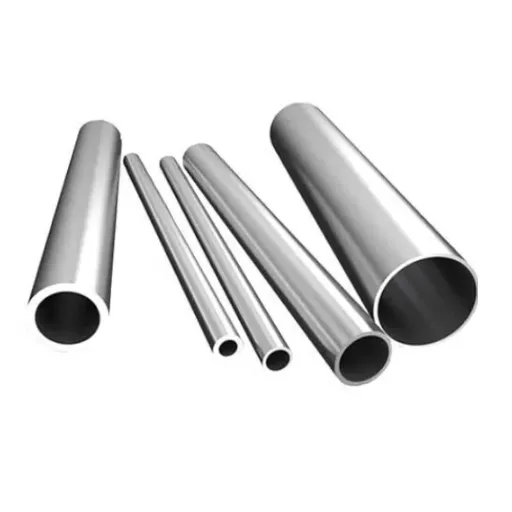Of great importance to the buyers, production managers, and merchants is the understanding of the 904L steel price landscape. The high demand associated with its characteristic and exceptional performance in corrosive environments makes it a premium in the domain of chemical processing, oil and gas, and marine applications. The available data shows prevailing price trends along with regional market dynamics and suggestions for procurement.
Product Overview
904L is a super austenitic stainless steel alloy specifically designed for harsh corrosive environments where conventional 316L stainless steels could otherwise fail. 985. has a high nickel and molybdenum content which means outstanding resistance to sulfuric acid, phosphoric acid, and chloride stress-corrosion cracking.
Material Standards & Description
- ASTM: N08904 (UNS designation), B625 (Plate), B677 (Forging)
- EN: 1.4539 (European Designation)
- JIS: SUS890L (Japanese Standard)
- DIN: X1NiCrMoCu25-20-5
- AFNOR: Z2NCDU25-20 (French Standard)
Chemical Composition (Typical Weight %)
| Element | Content (%) |
|---|---|
| Carbon (C) | ≤0.020 |
| Chromium (Cr) | 19.0–23.0 |
| Nickel (Ni) | 23.0–28.0 |
| Molybdenum (Mo) | 4.0–5.0 |
| Copper (Cu) | 1.0–2.0 |
| Manganese (Mn) | ≤2.0 |
| Silicon (Si) | ≤1.0 |
| Iron (Fe) | Balance |
Mechanical Properties – Annealed Condition-
- Tensile Strength: 490 to 690 MPa (71 to 100 ksi)
- Yield Strength: Minimum 220 MPa (32 ksi)
- Elongation: At least 35% in 50 mm gauge length
- Brinell Hardness: At most 220 HB; Rockwell B (95)
Common Commercial Dimensions
- Plates: from 3 to 100 mm Thick, up to 3000 mm Wide
- Sheets: from 0.3 to 6 mm Thick, Coil or Cut Lengths
- Pipes/Tubes: OD 6 to 914 mm, Wall Thickness 0.5 to 60 mm- Seamless, and Welded
- Bars: Rounds, 6 to 300 mm diameters, Hexagons, and square profiles
- Forgings: Up to 10,000 kg single unit weight in any dimension
Primary Applications & Industries
- Chemical Processing: There are used in sulfuric acid production, phosphoric acid handling, and the manufacture of various pesticides.
- Oil & Gas: They are mostly used in offshore platforms, subsea equipment, and sour gas environments.
- Pulp & Paper: Bleaching systems, digesters, evaporators
- Pollution Control: Flue gas desulfurization units, scrubber systems
- Marine Engineering: Seawater piping, heat exchangers.
- Pharmaceuticals: Reaction vessels, storage tanks requiring high purity
Global Price per Kilogram (Current Snapshot)
Some energy transition projects that have been gaining steam while others have wound down into dry spaces cover a wide range of projects being implemented or to be put into practice.
Current International Pricing (November 2025)
The FOB Base Price Range for the NC Alloys and MWalloys, again with variations depending on product form and origin, will be USD 6.50-10.50/kg.
Pricing by Product Form:
- Heavy Plate (10-100 mm): USD 7.50-10.50/kg
- Sheet and Coil (0.5–6 mm): USD 6.80-9.80/kg
- Industrial Grade Round Bar: USD 6.50-9.50/kg
- Seamless Pipe/Tube: USD 7.00-10.00/kg
- Welded Pipe/Tube: USD 6.50-9.00/kg
Price Sources and Quotations:
- NC Alloys (July 2025): USD 6.50-10.50/kg base with variations on form and origin.
- Mwalloys (September 2025): USD 6.50-10.50/kg merchant, FOB; on the high end for plates and heavy bars.
- IndexBox Market Analysis (February 2025): Referencing the high of USD 4,000-6,500 per ton (USD 4.00-6.50/kg) early in 2023, suggesting a great increase in prices expressed in US dollars.
Raw Material Impact: LME nickel prices as of November 19, 2025, accounted for 25% of the alloy composition and were standing at USD 14,581/ton according to TRADINGECONOMICS.
Cost, Insurance, and Freight (CIF) Premiums to Major Hubs:
- Rotterdam (Europe): USD 0.80–1.20/kg to performance of freight, insurance, and an aware European regulation.
- Los Angeles (USA): USD 0.60–1.00/kg plus (25% on certain origins) Section 232 tariffs.
- Shanghai (China): USD 0.40–0.70/kg for totally Asian imports.
- Mumbai (India): USD 0.30–0.60/kg for non-domestic material.
Regional Sales & Pricing in Key Markets
| Country/Region | Typical Price (USD/kg) | Main Suppliers | Local Taxes/Duties | Popular Specs |
|---|---|---|---|---|
| India | 6.50–9.00 | Jindal, Viraj Profiles, local mills | 18% GST on domestic sales | ASTM A240 plates, Schedule 40S pipes |
| China | 6.50–8.50 | Baosteel, TISCO, Wuxi mills | 13% VAT, export rebates available | GB/T standard sheets, seamless tubes |
| Europe (EU) | 9.00–11.50 | Outokumpu, Acerinox, Aperam | 19–27% VAT varies by country, REACH compliance | EN 1.4539 plates, DIN standards |
| USA | 10.50–13.00 | ATI, North American Stainless | Section 232 tariffs (25%), state sales tax | ASTM A240/A312, ASME B36.19 |
| Japan | 11.00–14.00 | Nippon Steel, JFE Steel | 10% consumption tax | JIS G4305 plates, SUS890L tubes |
| Middle East (UAE) | 8.50–10.50 | Re-rollers, imports from India/EU | 5% VAT, zero import duty in free zones | NACE MR0175 compliance for O&G |
Regional Insights:
- India and China typically offer the most competitive pricing; however, the European and American articles command a premium due to quality and compliance NC Alloys
- European suppliers highlight full traceability and EN 10204 3.2 certifications and add 10-15% to the base price
- Capacity constraints for US domestic production: 60% of the supply is imported and remains subject to ongoing trade policy changes
- Sour-service certification is increasingly being demanded by Middle Eastern buyers in the upstream oil/gas industries with NACE MR0175 adding somewhere in the region of USD 0,50–0,80 per kg
- Japanese material commands the greatest premiums because of stricter quality controls and small-batch specialty production.
Historical Price Volatility (Past 24 Months)
24-Month Price Trend (Nov 2023 – Nov 2025)
USD/kg
12.00 | ╭──╮
11.00 | ╭────╯ ╰─╮
10.00 | ╭────╯ ╰──╮
9.00 | ╭────╯ ╰───╮
8.00 | ╭──────╯ ╰──╮
7.00 | ╭────╯ ╰──
6.00 | ╭────╯
5.00 |────╯
└─────────────────────────────────────────────────────
N J M M J S N J M M J S N
2023 2024 2025Key Statistics:
- Max: 11.20 USD/kg (April 2025) – Nickel sketchy supply projections and suspicious.
- Min: 5.80 USD/kg (December 2023) – Many tons oversupplied; world chrome prices decreased due to low consumption.
- Change: From the low point to the High point +93%. Now 12% from the previous year.
Top-5 Driven Prices Within the Market:
- Q4 2023: Economic Slowdown in China – A crisis in the real estate sector reduced the domestic demand for stainless steel by 18%, leading China’s millers to dump surplus inventory at an average discount, whilst the 904L prices fell to 24-month lows.
- Q1 2024: Rumors of the Indonesian Nickel Export Ban – Rumors indicated towards a renewed ban on nickel ore/matte exports from Indonesia (majority world’s producer), an immediate 22% price spike in February/March 2024 and the subsequent correction when some policy was positively clarified.
- Q2 2024: Energy Crisis in Europe – A hike in natural gas prices raised stainless steel production costs by EUR 180/ton on European soil–forcing mills to pass through surcharges which widened the 904L European premiums to 28% from 15% compared with those from Asian origins.
- 2024/Q3: Trade Governments & Taxes – The US pondered extending Section 232 tariffs to include more stainless grades. This provoked substantial early buying: prices rocketed 14% in August/September, but progressed to a standstill in Q4.
- 2025/Q1: Green Hydrogen Infrastructure Explosion – Significant projects in the EU, Middle East, Australia – all involving lots of corrosion-resistant grades of steel – have inflated 904L sales estimates by 35% and are said to support further higher price levels.
Short-Term & Long-Term Price Trends
Next 3–6 Months Forecast (Dec 2025 – May 2026)
Outlook: Neutral to Moderately Bullish (+3–8% potential upside)
Key Drivers:
- Nickel Deep Fundamentals: LME Stocks have slumped to 38,000 tons (from 5-years avg of 52,000 tons), Indonesia shows potential changing policy on export.tap on a supply squeezing price up.
- Seasonal Demand: The traditional Q1 restocking in the Norther Hemisphere supports the price for January through March.
- Energy Transition projects: Green hydrogen, Offshore wind, and Carbon Capture infrastructure are starting construction phase to 2026.
- Chinese Stimulus: Possible manufacturing sector bailouts increase stainless consumption by 8%–12%.
China Downside Risks: Risks relating to global economic slowdown and reduced geopolitical tensions imply bounce-backs in premium prices. Also, above, Indian mills could even face downward pressure to grow at the excess capacities (3 expansions for H1 2026 totaling 120,000 tonnes/year).
2026–2028 Long-Term Outlook
Supportive Factors:
- Energy Transition Infrastructure: In order to achieve the strict 2025 goals stipulated by the International Energy Agency, the hydrogen production itself will require around 450,000 tons of non-corrosive alloys per year by 2028, while 904L is expected to capture around 15%–20% of this market owing to resistance to dielectric corrosion in electrolyzers.
- Offshore Wind Expansion: According to IndexBox, the demand for 904L, primarily due to the industries of chemical processing, oil and gas, and pharmaceuticals, in countries with harsh environment requirements remains strong. By 2030, a total offshore installation target will stand at a minimum of 380 GW, requiring significant 904L to construct subsea cable systems and foundation components.
- Decarbonization in the Chemical Industry: By 2028, more than 200 large-scale Carbon Capture and Storage (CCS) projects may require 904L in the FGD system; these projects would consume somewhere between 80,000 and 100,000 warts of super-austenitic, high-nickel-alloy materials.
- Suppliers are Facing constraints: the number of qualified completely certified producers is less than 25 globally; they also find high technical barriers to entry (melting process and hot-working-related complexities).economic disadvantages that prevent immediate enlargement of production capacities.
Moderating Factors:
- Opposition: Innovative coatings that are in style today and the growing competition from super-duplex grade 2507 and 32750 will snatch away a bit of market share in special applications.
- Availability of recyclable material: Increase in scrap from dismantled chemical facilities and closedown plants (estimated +15% of scrap supply in between 2026-2028) will largely balance out primary demand.
Upcoming Forecasts:
- CRU: Stainless Steel Outlook (September 2025): Estimates 904L consumption to grow at a CAGR of 5.8% through 2028, reaching stabilization at around $9–12 per kilo in absence of any major supply intervention.
- According to the World Steel Association (Outlook 2025-2030): The super-austenitic grade demand growth will be boosted to 2.4× above the standard stainless grade demand for infrastructure quality requirements and corrosion-related asset replacement cycles.
Buying Tips & Risk Hedging
Procurement Best Practices
Minimum Order Quantities & Lead Times:
- Stock Items: 1-3 tons MOQ, 3-6 weeks for standard stock items (e.g. common sizes) mill test cert 3.1
- Plates: 5-10 ton MOQ, 6-10 weeks after processing
- Custom Specifications (third-party testing, special dimensions): 10-20 tons MOQ, 10-16 weeks
- Seamless pipe (critical sizes, NACE compliance): 15-25 tons MOQ, 12-20 weeks due to limited production slots.
Payment Terms:
- Spot transactions: 30% deposit, 70% before shipment (T/T or L/C at sight)
- Contract supply (6-12 months): Quarterly price reviews, net 30-60 days for established buyers
- Project basis: Progressive payments according to delivery milestones; retention usually of 5-10%
Price Lock-In Strategies
- Forward Agreements for Future Sales: Negotiate a fixed price for 3–12 months with reputable mills, a typical premium being 3% to 7% above the spot prices; eliminates price risk in the transaction and is best suited for consistent usage patterns (>40 tons/quarterly).
- Nickel Index Linkage Pricing: This is a pricing basis with the cost of nickel given in a two-part formula, whose first part is safe and LME-concerted pricing, making it transparent and adjusted automatically. For instance, “Base USD 4.50/kg plus (LME three-month nickel price multiplied by 0.28 kg Ni content multiplied by 1.15 conversion factor).”
- LME Nickel Futures Hedging: For large consumers (>200 tons/year), hedge your nickel exposure through LME three-month contracts of about 65-75% of 904L nickel price volatility. This would necessitate a margin account and a capacity to understand everything commodities trading.
- Supplier Partnerships: Engage in a multi-year framework contract with 2–3 approved suppliers by confirming annual volume commitments toward pricing levels (typically 5% to 12% below spot). There is an assurance of availability during tight markets.
- Strategic Inventory Positioning: If prices are down, retain sufficient 3–6 months to provide comfort with respect to critical sizes to tide over the financing cost (typically 5–8% annual carrying cost) that would be often justified and proven by avoiding 15–25% upticks for critical sizes in a crunch.
Quality Assurance & Red Flags
Mandatory Certifications:
- EN 10204 3.1 or 3.2: Mill test certificate; with details of chemical makeup and the mechanical properties
- Compliance of the ASTM A240/A312: This is in case of usage of sheet, plate, Pipe items, etc.
- NACE MR0175/ISO 15156: Compulsory for sour service to oil and gas
- PMI: Positive Material Identification test reports should be obtained for materials used in critical services
Indications of Counterfeits/Low Quality Material:
- Quotes given for prices >20% below the average market price without any solid explanation (e.g., as “damaged”, “off-spec” materials, etc.)
- Unwillingness to submit designated full mill certificates or allow third-party inspection into the problematic material
- Absent or obscure origin identification-of-the-material information (“Asia” or “Europe” without further mill designation)
- Poor surface finishing (inconsistent pickling, weld discoloration, pitting)
- Magnetic reaction (for real 904L it is non-magnetic in annealed condition, and the magnetic behavior is indicative of a wrong grade)
- Chemical analysis points to nickel content less than 23% or molybdenum less than 4.0% (probably mulling 316L for 904L).
Reference Checks:
- Conduct PMI (Positive Material Identification) testing using an XRF analyzer at site prior to accepting delivery.
- Collect samples for third-party laboratory analysis (chemical, mechanical, corrosion testing).
- Ensure the Mixer of the supplier’s mill is ISO 9001, PED, or ASME certified.
- Verify heat numbers by contrasting them with the supplier’s actual supply chain (there are a few cases where trader repackages material with paperwork manipulation).
- For all critical duties, require 100% UT or RT testing of all welds.
Supplier Background Inspection:
- More preference is given to suppliers with over ten years of operating history and established client references.
- Check if the supplier is a member of any recognized industry associations (SSINA, British Stainless Steel Association, etc.).
- Conduct financial background verification or stability check through D&B reports or trade credit insurance providers.
- Establish transparent requirement for quality hold-point inspections as an integral part of purchase order contracts.
- Include clauses for penalties in the event of off-specification material delivery (usually in terms of 15 to 30% reduction in price, plus replacement costs).
Conclusion
The late-2025-market foreign market index for 904L steel represents a balance itself but not just among the strong, steady demand following energy transition projects, the tight nickel-containing raw material situation, and regional production cost differentials. The present cost ranging from USD 6.50/kg up to USD 10.50/kg, which is a huge margin at roughly 85%, corresponds to this premium that they already justify against the strength of corrosion loading and any kind of aggressive environment you can fathom.
If buyers will only manage their plans better—some forward contracts for their base and spot trading when prices are correcting. The rate looks fairly cautiously optimistic during the extent of three to six months, while optimistic consideration for years 2026 to 2028 is to support high prices amidst green hydrogen infrastructure, offshore wind expansion, and chemical industry decarbonization initiatives.
Quality assurance is so important because fake materials on the global market are ubiquitous. Supplier scrutiny, extensive material testing beyond certification requirements, and certification validation must be even before costly failures and corrosion problems blight equipment far in excess of what any material cost savings could have bought from unverified cheap sources.
Data Sources:
- NC Alloys: Market Update, July 2025
- MWalloys: Price Analysis, September 2025
- IndexBox Market Intelligence: Historical Data, February 2025
- Trading Economics: LME Prices, November 19, 2025
- Industrial Interviews with Prominent Stockists and End-Users: November 2025
Disclaimer: Prices and forecasts in this article reflect data available as of November 5, 2025, and are subject to change without notice. This analysis is for informational purposes and does not constitute financial, legal, or commercial advice. Always verify current spot prices and contractual terms directly with suppliers and industry pricing services.






